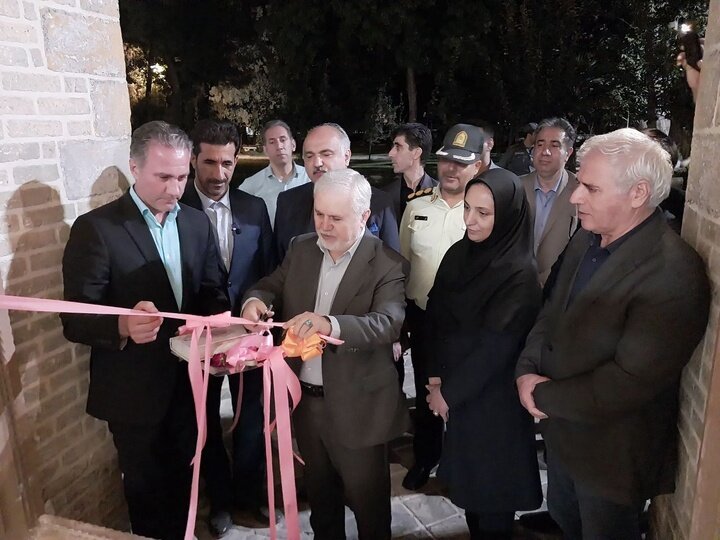Falak-ol-Aflak’s former barracks transformed into museum

TEHRAN - The Sassanid-era Falak-ol-Aflak Fortress in Khorramabad, Lorestan province, is set to undergo assessment by ICOMOS experts for potential inclusion in the UNESCO World Heritage list.
The assessment comes as restoration work on its “Sarbazkhaneh” (barracks), part of the fortress complex, has been completed with a budget of over 300 billion rials ($500,000), converting the structure into a museum.
The announcement coincides with the upcoming visit of ICOMOS evaluators to the site, highlighting the fortress’s rich cultural and historical significance, CHTN reported on Wednesday.
Ali Darabi, the deputy minister of cultural heritage, cut the ribbon on the newly restored museum and assessed the final steps of its transformation into a museum.
The Sarbazkhaneh, dating back to the Pahlavi I era, is a two-story, 2,450-square-meter building characterized by Iranian-European architecture, complete with intricate stone and brick decorations, the report said.
Moreover, the former barracks is a registered national heritage site, listed under registration number 3765.
Currently, the museum within the fortress displays notable artifacts, including a 2200-year-old coffin of a Lurestani man and a 9,000-year-old skull of a man from Delfan, attracting both local and international visitors.
Falak-ol-Aflak Fortress, a prominent eight-towered structure that dominates the city of Khorramabad, is one of the most visited attractions in the region. Known for its dramatic appearance, particularly when illuminated at night, the fortress offers striking views of its crenelated battlements, making it a centerpiece of the city’s cultural landscape.
According to Ata Hasanpour, Lorestan’s tourism chief, the fortress and its surrounding areas possess all the attributes needed for UNESCO recognition, interconnected in a way that mirrors the ensemble of Sassanian historical cities already listed as a World Heritage site.
The Sassanid era (224 to 651) is of very high importance in the history of Iran. Under the Sassanids, Persian art and architecture experienced a general renaissance. Architecture often took grandiose proportions, such as the palaces at Ctesiphon, Firuzabad, and Sarvestan, which are amongst the highlights of the ensemble. Crafts such as metalwork and gem engraving grew highly sophisticated, yet scholarship was encouraged by the state. In those years, works from both the East and West were translated into Pahlavi, the language of the Sassanians.
AM
Leave a Comment